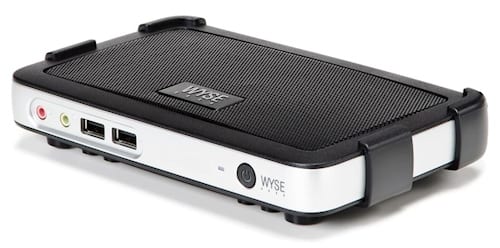We have now selected and ordered the thin client device (small dedicated cloud computer) which will be going into open access areas of the GCW Library in September. It is the latest T10 model from Wyse which boots up in 12 seconds and uses just 7W of power. It has no fans or other moving parts and so is completely silent in operation. We are planning to mount them on the rear of the monitors which will result in a neat and tidy solution which is very space efficient.
Author: Leigh Haynes
So it begins
Although the blog has been a little quiet once again, work has been continuing in the background and the procurement cogs have continued to turn.
A number of companies submitted responses to our invitation to tender. An evaluation panel reviewed the submissions, shortlisted, attended presentations and after scoring each solution made a recommendation to select a particular supplier, which was then ratified by the project board.
The contract has been awarded to Phoenix IT Services Ltd and work on delivering the solution will now start with a series of low level design workshops.
Now that the competition process is complete, the project board have agreed that this blog can be made publically visible.
Why VDI?
Virtual Desktop Infrastructure (VDI) is an alternative method for delivering desktops to end users. A virtual desktop looks and acts like a traditional PC but, instead of residing locally, all software and data are housed in the University’s central data centres and offered as an “internal cloud” service. The Windows 7 Project will use server hosted desktop technology which offers numerous advantages in terms of cost savings, security, resilience, flexibility and reduced management.
For a comparison of the strengths and weaknesses of traditional PCs vs VDI check out; Why VDI?
ITT Issued
Although the blog has been a little quiet, much work has been continuing in the background and procurement cogs have been turning. Today we issued the Invitation to Tender (ITT) seeking a Solution Provider with the appropriate product range, experience and competitive pricing who will act as a partner in delivering the new centralised desktop. The selected Solution Provider will be required to supply hardware, software and associated professional services; consultancy, architecture design, project management, knowledge transfer and training. The tender is being issued under the SUPC National Server and Storage Agreement framework.
SMT gives the green light
Last week we presented the proposal to deliver a flexible centralised Windows 7 & Office 2010 desktop using Microsoft Remote Desktop Services to SMT. I am pleased to report that the proposal was accepted and we now have approval to proceed into full implementation.
As the solution requires significant new supporting network and server infrastructure we will now enter into a tender exercise and period of procurement which is likely to take us well past Christmas. The plan is to have the system up and running with a core set of general student focused software applications in time for the new academic year. To compliment this we intend to replace PCs in some open access locations such as the Library with thin client devices.
We will then start to add the business applications and subject specific software based on a more detailed requirements analysis. This will identify those applications which are most frequently or widely used or are otherwise critical to a specific deployment scenario.
